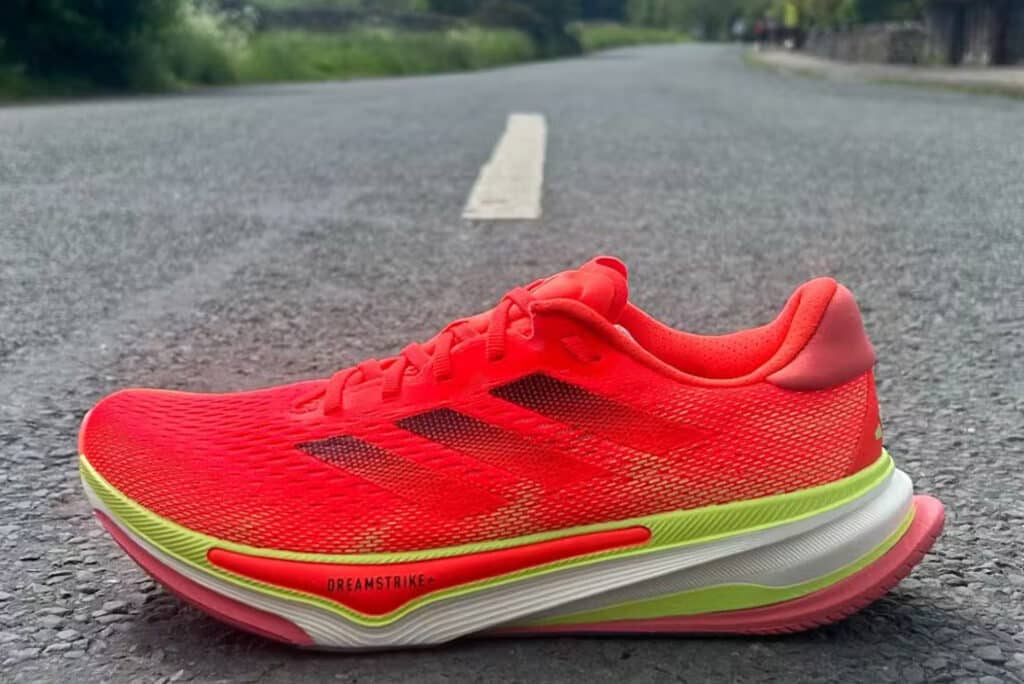


For many runners, running a 5K race is often the first step towards achieving their fitness goals. And while a 5K may seem like a short distance compared to marathons and half-marathons, even experienced runners need dedicated training and preparation. If you’re looking to improve your 5K time and run faster, here are some tips for creating an effective training plan.
Before you start training, it’s important to understand your goals for the 5K race. Are you looking to beat a personal record? Do you want to finish in a specific time? Or are you simply aiming to complete the race without stopping? Knowing your goals will help guide your training plan and give you a sense of purpose throughout the process.
It’s also important to set realistic goals that are achievable with your current level of fitness and training experience.
Running a fast 5K requires a combination of proper training, pacing, and mental preparation. To achieve a fast 5K time, runners need to focus on building their endurance, speed, and running efficiency. This can be achieved through a structured training plan that includes interval training, hill repeats, and tempo runs. Interval training helps improve speed and stamina by alternating between high-intensity bursts and recovery periods. Hill repeats build explosive power and strength, while tempo runs enhance your ability to sustain a faster pace over longer distances.
Additionally, runners need to pay attention to their nutrition and recovery strategies to ensure they are fuelling their body for optimal performance. By combining these elements, you can create a comprehensive training plan that sets you up for success on race day.
Finding a 5K race is easier than ever, with plenty of options available to suit runners of all levels. Many local communities, charities, and running groups host 5K events throughout the year, often catering to beginners and seasoned runners alike.
Parkrun is the most popular weekly 5K race, taking place across the UK and worldwide. It is a free, timed event that encourages people of all ages and abilities to participate in running.
The idea behind Parkrun began in 2004 when founder Paul Sinton-Hewitt wanted to create a way for his friends and fellow runners to stay connected and motivated. What started as a small group of 13 runners has now grown into a global phenomenon, with over 6 million registered participants worldwide.
One of the key aspects of Parkrun is its inclusivity. The event is open to everyone, regardless of their running experience or speed. This welcoming atmosphere has helped to break down barriers and make running accessible to all.
Participants can choose from a range of beautiful park locations, making each run not only physically beneficial but also mentally refreshing.
In order to run a faster 5K, you need to have strong aerobic endurance. This means your body is able to efficiently use oxygen during exercise, which is crucial for sustained running. To build this endurance, incorporate longer runs into your training plan. Start with shorter distances and gradually increase the duration of your runs.
It’s also beneficial to include cross-training activities such as cycling or swimming to help strengthen different muscles and prevent overuse injuries.
Including cross-training activities like cycling or swimming can also strengthen different muscles and prevent overuse injuries while supporting endurance growth.
In addition to building endurance, speed workouts are essential for improving your 5K time. Understanding and training at your threshold pace can significantly improve your running performance. These workouts include intervals, tempo runs, and hill repeats. Intervals involve alternating between running at a fast pace and recovering at a slower pace. Tempo runs are longer, sustained periods of running at a comfortably hard pace.
To calculate your threshold pace, you can perform a 30-minute time trial. Warm up first, then run as hard as you can sustain for 30 minutes. Record your average pace or heart rate during the final 20 minutes of the run—this is your threshold pace. Alternatively, if you use a race time, your threshold pace is roughly the pace you can maintain during a 10K race. Some running apps and devices can also help estimate it based on your training data.
This session balances effort and recovery, helping to improve your speed and endurance for a 5K race.

Hill repeats and tempo runs are two essential training methods for improving running performance. Hill repeats involve running up a hill at a high intensity, then recovering by walking or jogging back down. This type of training helps build explosive power and endurance, making your legs stronger and more resilient. Tempo runs, on the other hand, involve running at a moderate to high intensity for a longer period.
This session builds leg strength, power, and endurance while improving overall running performance.
This progressive tempo run gradually builds intensity while improving endurance, speed, and mental toughness.
Both hill repeats and tempo sessions help improve running efficiency and endurance by teaching your body to maintain a faster pace for extended periods. By incorporating hill repeats and tempo runs into your training schedule, you can significantly boost your running speed and endurance, leading to a faster 5K time. These workouts not only challenge your physical limits but also build mental toughness, preparing you for the demands of race day.
Don’t neglect strength training workouts while preparing for a 5K. Incorporating strength training workouts is crucial for improving your running form and reducing the risk of injury. Strong muscles help enhance your running performance. Incorporate exercises such as squats, lunges, and planks into your routine to build overall strength and stability.
Kettlebell exercises are a fantastic way to build strength and improve running performance. Movements like kettlebell swings, goblet squats, and Turkish get-ups not only strengthen key muscles used in running, such as your glutes, hamstrings, and quads, but also engage your core for improved stability and posture.
The dynamic nature of kettlebell training helps activate multiple muscle groups at once, mimicking the functional strength needed during a run. Plus, these exercises improve core strength, which is essential for maintaining proper form, increasing endurance, and boosting speed.
While running is the main form of exercise for a 5K, cross-training can also be beneficial. Activities like yoga, pilates, spinning and stretching can help improve flexibility and prevent injury. It’s important to listen to your body and give it proper rest and recovery time.
Incorporating cross-training into your training schedule and balancing it with running sessions can improve running performance and reduce injury risk.
Proper nutrition and recovery are key components of a successful 5K training plan. Achieving peak performance requires not only effective training but also proper nutrition and recovery strategies. Make sure you’re fuelling your body with the right nutrients to support your training. This includes consuming enough carbohydrates for energy and protein for muscle repair.
We recommend taking a Healf Ketone IQ Shot before your run to boost your energy and performance. Ketones are 28% more efficient as a fuel source than glucose alone. Unlike glucose, they prevent sugar crashes and insulin spikes, promoting smoother and more stable energy levels. Additionally, ketones can cross the blood-brain barrier, serving as brain fuel to help you reach and maintain peak mental clarity.

For fuelling during your 5k run, we recommend SIS Beta Fuel Energy Gel Orange or SIS Beta Fuel Energy Gel Strawberry & Lime. These energy gels provide 40g of carbohydrates, specifically designed to enhance your power output.
In terms of recovery, make sure you’re getting enough rest and incorporating stretching and foam rolling into your routine. Proper recovery is crucial for avoiding injury and allowing your body to adapt to the training.
Proper nutrition is essential for optimal running performance. Runners need to fuel their body with the right foods to ensure they have enough energy to power through their runs. This includes consuming complex carbohydrates, lean protein, and healthy fats. Complex carbohydrates provide a steady source of energy, while lean protein aids in muscle repair and recovery.
Healthy fats support overall health and endurance. Additionally, runners need to stay hydrated by drinking plenty of water and electrolyte-rich fluids. Hydration is crucial for maintaining performance and preventing cramps and fatigue. By fuelling their body with the right foods and staying hydrated, runners can optimise their performance and achieve a faster 5K time. Remember, what you eat and drink can make a significant difference in how you feel and perform during your runs.
Recovery is a critical component of any training plan. Runners need to allow their body time to recover between runs to avoid injury and burnout. This includes getting enough sleep, stretching and foam rolling, and incorporating rest days into their training schedule. Sleep is when your body repairs and rebuilds, so aim for at least 7-8 hours per night.
Stretching and foam rolling help maintain flexibility and prevent muscle tightness. Additionally, runners can use recovery strategies such as compression garments, ice baths, and massage to help their body recover faster. Compression garments can reduce muscle soreness, ice baths can decrease inflammation, and massages can relieve muscle tension. By prioritising recovery, runners can improve their running performance and achieve a faster 5K time. Remember, recovery is just as important as the training itself.
Understanding your goal race pace and how it relates to the specific race distance is crucial for running a faster 5K. Make sure to incorporate pace-specific workouts into your training plan to help you get comfortable with running at your desired speed.
On race day, it’s important to stick to your goal pace and not let yourself get carried away with the excitement of the event. Trust in your training and stay focused on achieving your specific goals.
Setting a goal race pace is essential for achieving a fast 5K time. Runners need to determine their goal pace based on their current fitness level and running performance. This involves calculating their pace per mile and setting a realistic goal pace. Once you have your goal pace, you can create a training plan that is tailored to your needs and goals.
This includes incorporating interval training, hill repeats, and tempo runs into your training schedule to help you achieve your goal pace. Interval training helps you get comfortable with running at faster speeds, while hill repeats and tempo runs build the strength and endurance needed to maintain that pace. By setting a goal race pace and creating a structured training plan, runners can achieve a faster 5K time and reach their running goals. Stay focused, trust your training, and you’ll be crossing the finish line faster than ever.
For those looking to take their training to the next level, there are various advanced techniques that can be incorporated into a 5K training plan. Incorporating tempo training is crucial for enhancing speed and overall performance, especially when transitioning from shorter to longer races. These include plyometric exercises, speed drills, and hill sprints.
Plyometrics involve explosive movements such as jumps and hops which can help improve power and speed. Speed drills focus on specific running techniques such as arm drive and stride length.

These advanced techniques should only be incorporated after building a strong base of endurance and incorporating basic speed workouts into your routine.
A structured training plan is crucial for running a faster 5K. It’s important to have a mix of different types of runs and cross-training activities, as well as incorporating rest days to allow your body to recover
At Coach the Run, we offer various 5k training plans available for download that can be customised to fit your specific goals and schedule. We offer plans ranging from Beginner 5K to Sub 18-Minute 5K, catering to all levels of runners. Make sure to choose a plan that aligns with your current fitness level and take note of any necessary adjustments as you progress.
It’s common to face challenges while training for a 5K, whether it be physical or mental barriers. Some runners may experience injuries or struggle with motivation and consistency.
In these situations, it’s important to listen to your body and make necessary adjustments. Don’t push through pain and risk further injury. Seek professional advice if needed.
For mental challenges, try finding a running buddy or joining a local running group for support and accountability. Remember why you started training in the first place and celebrate small victories along the way.

While running a 5K may not require as much gear as longer distance races, it’s important to have proper equipment for a comfortable and successful race. Invest in a good pair of running shoes that provide support and fit your foot type. Why not check out our recommendations by Brandon Law, a marathon runner and shoe enthusiast, in his blog Best Neutral Daily Trainers.
Consider wearing moisture-wicking clothing to stay dry, comfortable, and prevent chafing during your run. These fabrics are designed to pull sweat away from your skin, helping to regulate your body temperature and reduce irritation.
Additionally, don’t forget about important accessories like sunglasses to protect your eyes from harmful UV rays, a hat or visor to shield your face from the sun, and sunscreen to safeguard your skin from sun damage, especially when running in bright, sunny conditions. Preparation is key to ensure a safe and enjoyable experience!
As race day approaches, it’s important to taper your training and allow your body to rest for optimal performance. This means gradually reducing the intensity and distance of runs in the weeks leading up to the race.
Make sure to also prioritise sleep and proper nutrition during this time. Trust in your training and give yourself plenty of rest before tackling that 5K with all you’ve got!
Running a faster 5k requires a dedicated training plan and commitment to proper nutrition, rest, and recovery. Incorporating cross-training, setting realistic goals and incorporating advanced techniques can help take your performance to the next level. Don’t forget about proper gear and equipment for a comfortable race experience. With the right mindset and approach, you can achieve your goal of running a faster 5K.
Why not download one of our 5k training plans today and start your journey towards a faster 5K? Click here to explore our plans.
Keep pushing yourself and never stop setting new goals as you continue on your running journey.
Join our mailing list to stay up to date with the latest UK running events, training tips, and exclusive offers on running products. Rest assured, we value your privacy and would never dream of selling your address. Sign up now…
Share this article
Wondering “how fast should I be running?” The answer depends on your fitness level, running...
As a runner, you may have experienced those days when your legs feel tired and...
Are you ready to boost your running game this spring? Mark your calendars for the...
I’m in my mid-40s and enjoy the challenge of the marathons. I keep hearing about...
Introduction: the unwelcome bonk We’ve all experienced it at some point – that dreaded sudden...
I’ve seen many friends post up runs on Strava during marathon training, calling it a...
We’re here to make sure you’re up-to-date with the latest running tips, events and product discounts – we’ve always got your back! Rest assured, we value your privacy and would never dream of selling your address.
BONUS: Sign up today and receive a FREE code for our Sub-4-Hour Marathon Plan